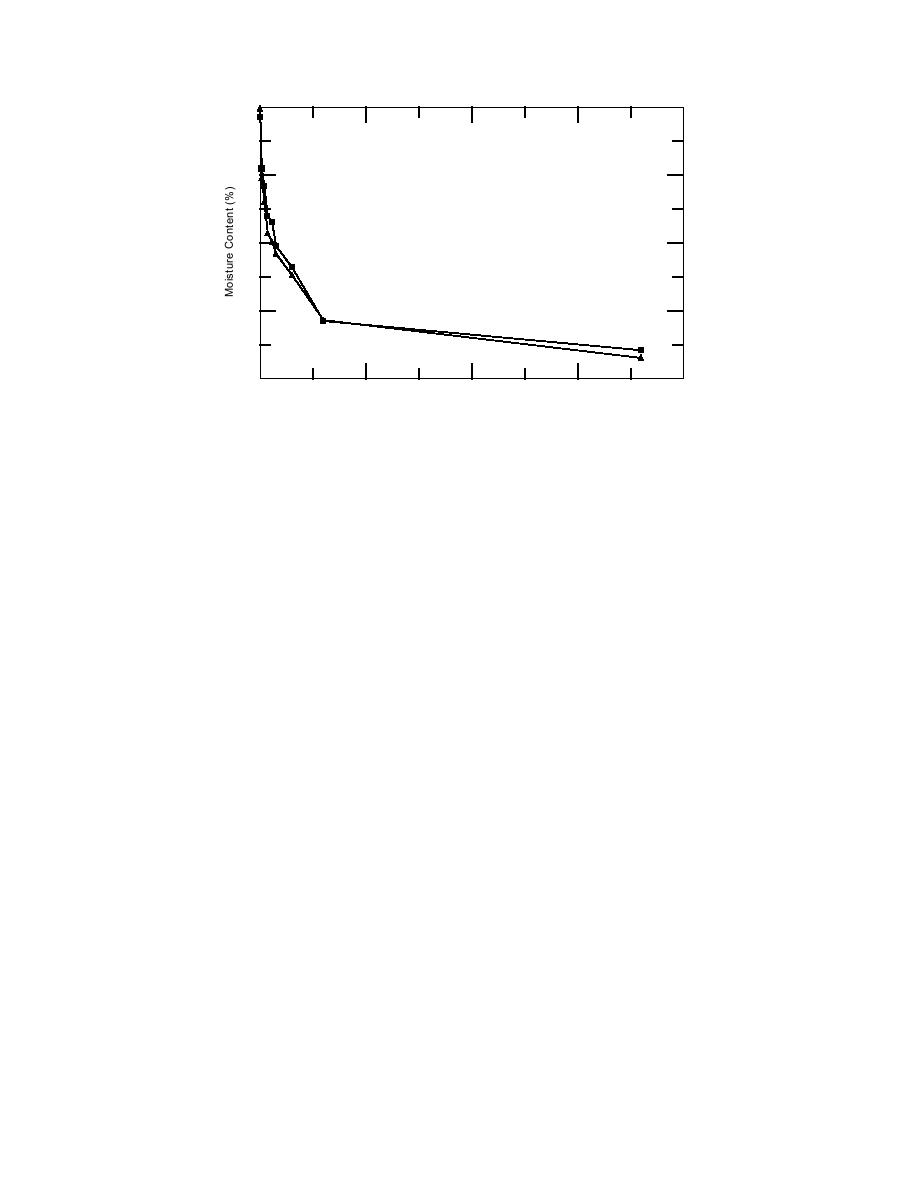
16
12
8
4
20C Air Temperature
5C Air Temperature
0
0
400
800
1200
1600
Time After Mortar Placed on Brick (min)
Figure 8. Effect of air temperature on rate of moisture mortar loss. Dry units
and mortar (MC-M) at 20C.
approximately equal value. The removal of the
The effects of mortar temperature were evident
unvented prism from its bag and the venting of
in the results of tests performed on fresh mortars.
the bag around the other prism resulted in a lower
Cone penetrations were consistently lower for
relative air humidity around the prisms, which in-
higher-temperature mortars and, correspondingly,
creased the rate of water loss to the air by both the
air contents decreased with increases in tempera-
mortar and the units. The air circulation would
ture (mortar water contents were maintained equal).
also contribute to increased evaporation. As the
Effect of unit manufacture. The results of the full
units continued to dry due to these two factors, the
immersion tests and the partial immersion tests as
units were also then capable of absorbing more
well as other individual tests on the various units
water from the mortar.
considered confirmed that each unit has very dif-
Effect of air temperature. While air temperature
ferent unit properties. The results of the absorption
obviously influences many aspects of masonry
from mortar tests, as shown in Figure 10, demon-
construction, air temperature by itself does not
strate that these different properties also affect the
appear to have a significant direct effect on the rate
rate of mortar moisture loss. The results corre-
of moisture loss in the masonry mortar (as long as
spond rather well to those of the partial immersion
those temperatures are above the freezing point of
test results. The partial immersion test demon-
the water). The effect of reducing air temperature
strated the wicking or suction potential for the
from 20 to 5C (68 to 41F) using warm units and
units. CMU B demonstrated the greatest such
warm mortar is shown in Figure 8.
potential in those tests, and the effect of that poten-
Effect of mortar temperature. Mortar tempera-
tial is shown in Figure 10 by working to reduce the
tures of 5, 20, and 30C (41, 68, and 86F) were
moisture content in the mortar at a faster rate than
used with units of different moisture contents and
the other unit types.
different unit temperatures in different air temper-
Effect of unit temperature. In nearly all of the nine
atures. Based on the results of these tests, there
cases in which the effect of unit temperature could
appears to be little effect of mortar temperature on
be evaluated, the units with the higher unit tem-
rate of mortar moisture water loss (Fig. 9). A
perature resulted in the greater rate of unit mois-
slightly increased rate of water loss in the 30C
ture loss. However, for the majority of those cases,
(86F) mortar was observed in comparison with
the increased rate of mortar moisture loss was neg-
the other mortar temperatures when used with the
ligible. The only cases in which there appeared to
warm units. However, when cold units were used,
be a real benefit to the warmer units was when
they were used with 30C (86F) mortar. This re-
the mortar with a temperature approximately
equal to that of the units appeared to have the
search did not address the effects of unit tempera-
tures below the freezing point of water, 0C (32F).
slightly greater rate of water loss.
10



 Previous Page
Previous Page
